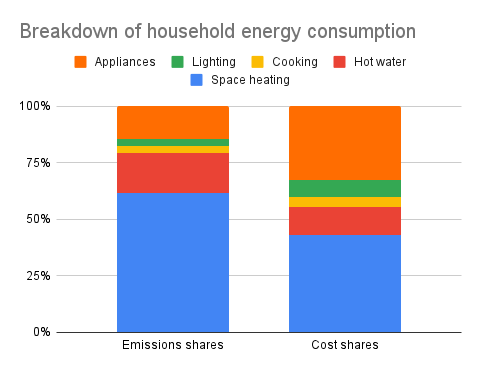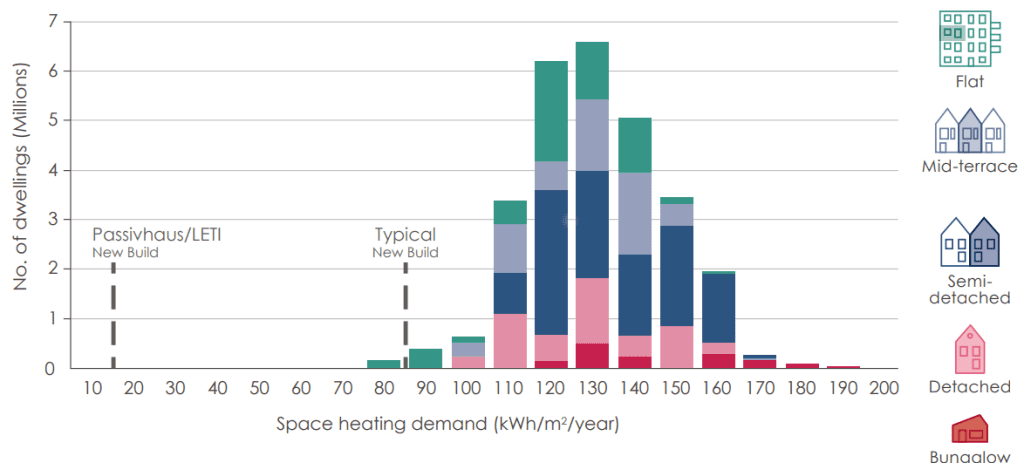Why?
Regularly reviewing your energy bills and monitoring your home energy use will give you a good overview of where and when you are using energy. It also helps you to see where you might want to do more to reduce your usage. By doing this, you can make informed decisions when investing in energy efficient appliances or energy saving measures.

Every home is different and differences in our daily routines mean that the breakdown of how we use energy varies greatly across households. The graph to the left gives you an idea of which energy uses at home on average cause the most emission and carry the highest cost according to BEIS and Ofgem.
How?
Review your home energy bills
The easiest way to review your energy bills is to keep hold of bills when you receive them and set aside a time once or twice a year to go over them. If you have a smart meter you can log into your account to see how much energy you are using. You can use the graph below to get a bit of a sense of where your energy consumption is relative to other homes in the UK. If you divide your estimated annual gas demand from your gas bill by the floor area of your home (e.g. from old plans from property websites such as Zoopla or Rightmove) you can use the graph to benchmark your space heating demand.

Get a smart meter installed
A smart meter is a gas and/or electricity meter that collects real time data and shares it with your provider. It also includes an in-home display, showing you how much energy your household is currently using and how much it costs. A smart meter is also a good way to figure out your standby energy consumption used by appliances around your home when they’re not actively being used.
Find out where your home is leaking heat using a thermal imaging camera and other tricks
During the winter months, when you have your heating on, you can find out where your home is loosing heat using a thermal imaging cameras. These cameras show differences in temperatures and can reveal problems with draughts, insulation, damp and more. We run a thermal image training and loan scheme during the autumn and winter months, training people up and loaning out cameras for free. Find out more here.
Our thermal imaging cameras are in high demand at the moment. If you can’t get hold of one, you can use simple techniques for finding draughts on windy days like listening for rattles and whistling noises and taking time to feel for draughts around doors, windows, floorboards, beams, skirting boards, around cable inlets and chimneys.
Support
Smart meters: Information on different types of smart meters and how book your installation
Thermal image and loan scheme: At Cambridge Carbon Footprint we run a thermal imaging camera training and loan scheme in the autumn and winter months. Sign up to a course and borrow a camera to find heat losses in your home. You can also offer to do this for friends and neighbours.

